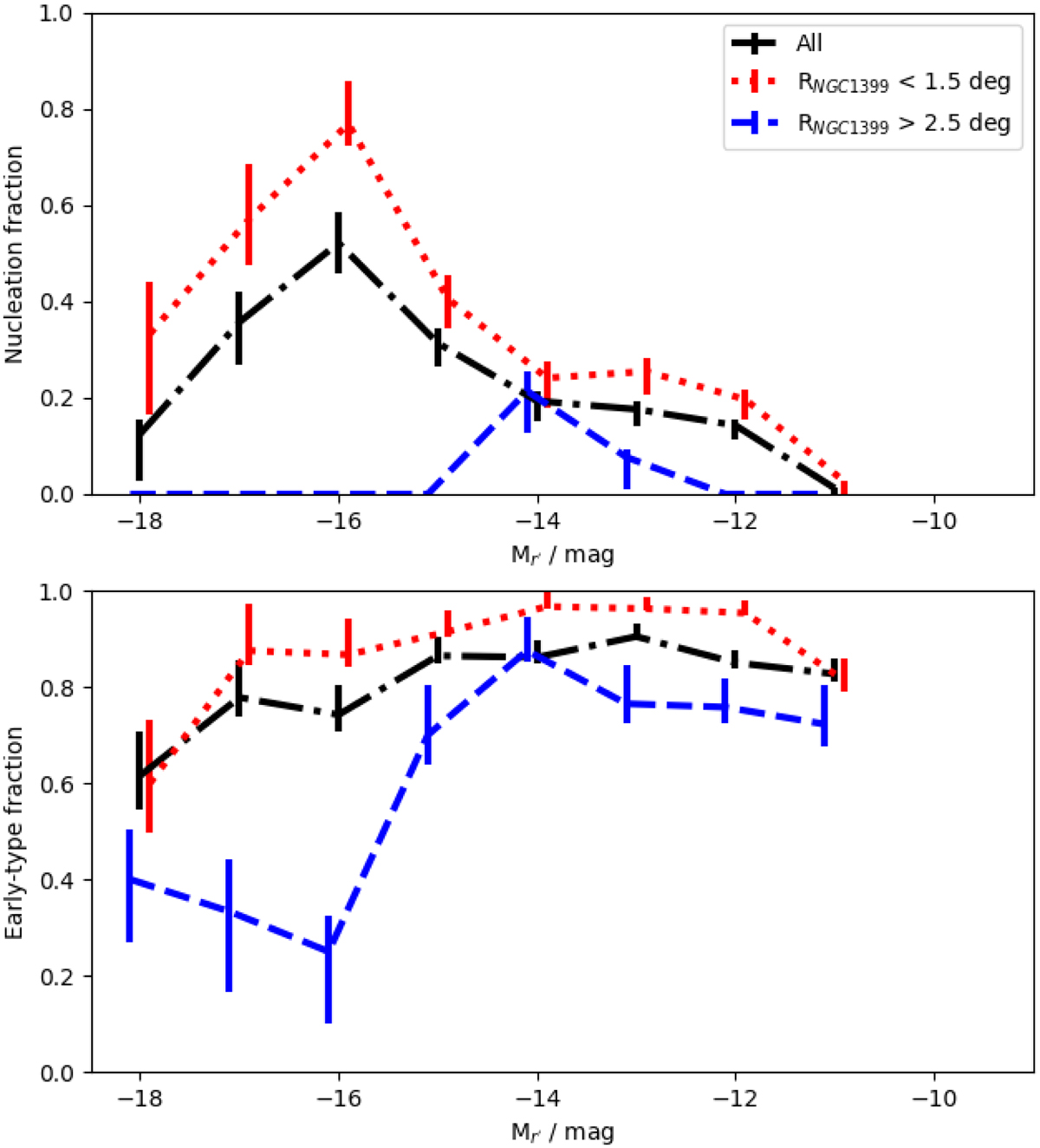Fig. 21.

Effectiveness of different environmental processes in the galaxy stellar mass-effective radius plane. The black points correspond to the FDSDC galaxies. The lines in the left panel show the stripping radius as a function of galaxy’s stellar mass. For the areas on the right side of the lines, Πgal < Pram, and thus all the gas gets stripped. The blue and green lines show the stripping radii at the cluster-centric distances of 100 and 300 kpc (≈0.3 deg and 1 deg), respectively, and the solid and dotted lines correspond to galaxy velocities of 370 km s−1 and 550 km s−1, respectively. The lines in the middle panel show the relation between the tidal radius and galaxy mass for three orbits with different peri-center radii. The solid and dotted lines show the tidal radii for the galaxies when assuming DM-halo and without DM-halo, respectively. The solid and dotted lines in the right panel show the disruption times against harassment for the given mass and effective radius galaxies, when assuming a dark matter halo, and when using only the stellar mass for the calculation, respectively.
Current usage metrics show cumulative count of Article Views (full-text article views including HTML views, PDF and ePub downloads, according to the available data) and Abstracts Views on Vision4Press platform.
Data correspond to usage on the plateform after 2015. The current usage metrics is available 48-96 hours after online publication and is updated daily on week days.
Initial download of the metrics may take a while.


